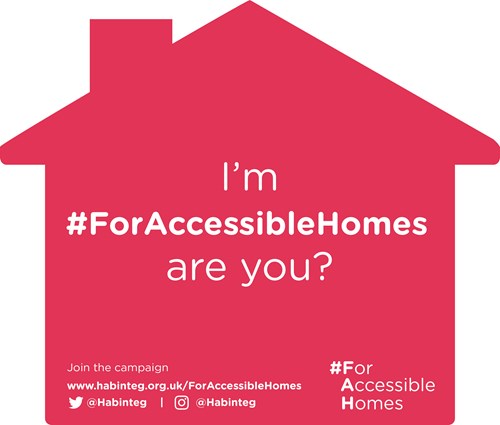Accessibility and adaptability need to be at the heart of our approach to tackling the housing crisis
11 September 2019

This week (9-13 September) is #ForAccessibleHomes2019 week, which is being championed by Habinteg Housing Association to raise awareness about the lack of accessible homes in the UK.
Helen Evans, Chief Executive of Network Homes and Chair of the G15
The housing crisis is often painted with a broad brush. The focus usually being on affordability, availability and quality - or lack thereof. Yet at the heart of it, things are more complex.
Despite there being nearly 14 million disabled people living in the UK, of which 1.2 million are wheelchair users, and our rapidly ageing population, just 7% of English homes currently provide even the most basic accessibility features to be deemed ‘visitable’ by a disabled person, according to the latest English Housing Survey.
Accessibility and adaptability therefore need to be at the heart of our approach to tackling the housing crisis.

Habinteg’s recent insight report, Forecast for Accessible Homes, should be a call to action on this. Its findings that less than a quarter of all homes built outside London will be suitable for older and disabled people by 2030, with just 1% of those set to be accessible to wheelchair users, is a worrying statistic.
Earlier this year the G15 welcomed Shelter’s call for three million new social homes to be built in England over the next 30 years. Social housing is vital national infrastructure and it needs long-term funding. But to get the best value out of any such investment, these new homes must reflect and be adaptable to the changing needs of the people who live in them. This is especially acute when you consider disabled people are twice as likely to live in social housing than non-disabled people.
Likewise, the government’s commitment to delivering 300,000 new homes a year by the mid-2020s must reflect the needs of our diverse population. Not just now, but for future generations as our population ages and disability rates increase.
This is why Habinteg’s call for a more strategic approach to housing delivery is so important, and in particular the call on the government to change national policy so that all new homes are built to be more accessible and adaptable, as they are in London.
G15 members can be proud that all social homes they are developing in London will be accessible by default. The London plan stipulates that all new homes should be built as a minimum to an accessible and adaptable standard M4(2) Category 2 and 10% should be built to a wheelchair accessible standard M4(3) Category 3.
At a time when local authorities and planning departments are stretched, bringing all new homes across the country up to the same standard may be a challenge. But unless action is taken, older and disabled people will feel excluded from their communities with negative consequences on their health and independence, which will place increasing demands on our public services.
Accessible homes help people stay active, part of the community and achieve independence. This inclusivity speaks to our social mission as housing associations, so we should all be champions of accessibility this #ForAccessibleHomes2019.

